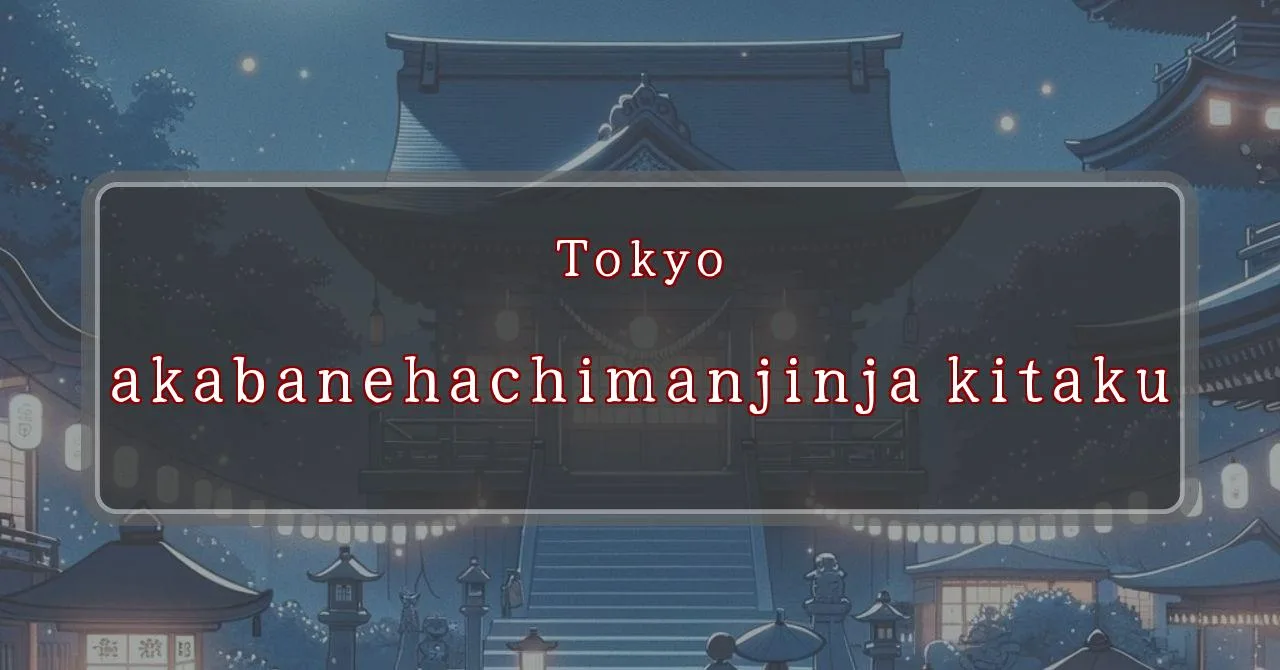Divine illumination at Akabane Hachiman Shrine
Basic Information
Akabane Hachiman Shrine is a Shinto shrine located in Akabane, Kita Ward, Tokyo, Japan. It is dedicated to the god Hachiman, the god of war and archery.
- Address: 4-1-6 Akabane-dai, Kita-ku, Tokyo 115-0053
- Phone Number: 03-3908-1764
- Access: 10-minute walk from JR Akabane Station West Exit
- Festival Days: September 15th, 2024
Main Events and Attractions of the Festival
The Akabane Hachiman Shrine Festival is a lively and colorful event that attracts many visitors each year. The main events and attractions of the festival include:
Mikoshi Procession
The highlight of the festival is the mikoshi procession, which takes place on September 15th. Two mikoshi (portable shrines) are carried through the streets of Akabane by teams of people. The procession is accompanied by music, dancing, and cheering.
Kagura Performance
Kagura is a traditional Japanese dance and music performance that is often performed at Shinto shrines. During the Akabane Hachiman Shrine Festival, kagura performances are held on the shrine grounds. These performances are a beautiful and unique way to experience Japanese culture.
Food Stalls
No Japanese festival is complete without food stalls! At the Akabane Hachiman Shrine Festival, you can find a wide variety of food stalls selling everything from traditional Japanese dishes to modern festival favorites. Be sure to try some of the local specialties, such as akabane-yaki (a type of grilled chicken) and akabane-manju (a sweet bun filled with red bean paste).
Games and Activities
There are also a number of games and activities for children and adults to enjoy at the festival. These include traditional Japanese games like ring toss and goldfish scooping, as well as more modern games like face painting and balloon art.
Blessings and Deities
Akabane Hachiman Shrine is dedicated to the god Hachiman, the god of war and archery. Hachiman is also revered as a protector of the people and a bringer of good fortune. Visitors to the shrine often pray for success in their studies, career, and relationships.
- Hachiman: God of war and archery, protector of the people, bringer of good fortune
- Other Deities: Inari, the god of rice and business; Benten, the goddess of wealth and good luck; Ebisu, the god of fishing and commerce
Origin and History
The origins of Akabane Hachiman Shrine are unclear, but it is believed to have been founded in the 13th century. The shrine was originally located in a different part of Akabane, but it was moved to its current location in 1695. The shrine was destroyed by fire in 1868, but it was rebuilt in 1872.
- Founded: 13th century
- Moved to Current Location: 1695
- Destroyed by Fire: 1868
- Rebuilt: 1872
Tips and Notes for Visitors
Here are some tips and notes for visitors to Akabane Hachiman Shrine:
- Hours: The shrine is open from 9:00 AM to 5:00 PM every day.
- Admission: Admission to the shrine is free.
- Dress Code: There is no specific dress code for visiting the shrine, but it is considered respectful to dress modestly.
- Photography: Photography is permitted within the shrine grounds, but it is prohibited inside the main shrine building.
- Festivals: The shrine holds several festivals throughout the year, including the Akabane Hachiman Shrine Festival in September and the Setsubun Festival in February.
Parking Information
There is a small parking lot available at Akabane Hachiman Shrine. However, it is often full, especially during festivals and events. There are several public parking lots located within walking distance of the shrine.
- On-Site Parking: Small parking lot available, but often full
- Public Parking: Several public parking lots located within walking distance
Popular Stalls and Food Carts in Recent Years
| Type of Stall | Description |
|---|---|
| Takoyaki | A staple at Japanese festivals. Characterized by a crispy outside and a creamy inside. |
| Jaga Butter | A simple yet popular snack of hot potatoes lavishly topped with melted butter. |
| Baby Castella | Small castella cakes, sweet and fluffy treats enjoyed by children and adults alike. |
| Grilled Ayu with Salt | Fresh ayu fish grilled whole with salt, a savory taste of Japanese summer. |
| Shaapin | A unique gourmet item influenced by foreign cuisine, with a chewy skin wrapping the filling. |
| Okonomiyaki | A Japanese grilled dish where you often choose your own ingredients for a personalized flavor. |
| Cotton Candy | A fluffy, sweet snack that’s extremely popular with children. |
| Chocolate Banana | A banana coated in chocolate, a fun and visually appealing dessert. |
| Kushiyaki | Various types of ingredients skewered and grilled, an easy-to-enjoy snack. |
| Yakisoba | Fried noodles mixed with a special sauce, a fast food favorite in Japan. |



